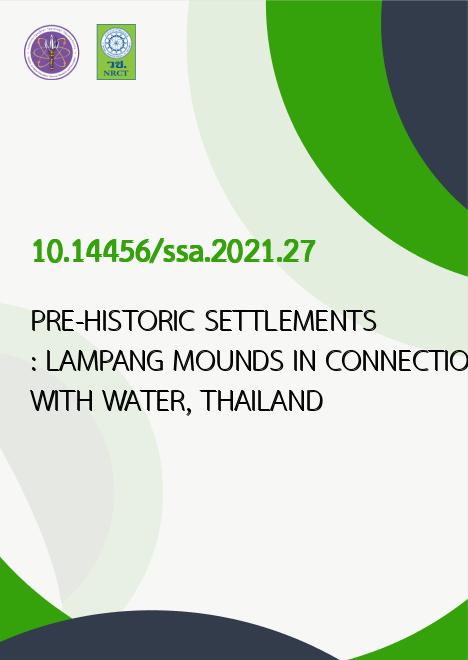
|
PRE-HISTORIC SETTLEMENTS: LAMPANG MOUNDS IN CONNECTION WITH WATER, THAILAND |
|---|---|
| รหัสดีโอไอ | |
| Creator | Suparp Tajai |
| Title | PRE-HISTORIC SETTLEMENTS: LAMPANG MOUNDS IN CONNECTION WITH WATER, THAILAND |
| Contributor | Witiya Pittungnapoo |
| Publisher | National Research Council of Thailand |
| Publication Year | 2564 |
| Journal Title | SOCIAL SCIENCE ASIA : Official Journal of National Research Council of Thailand in conjunction with Art and Architecture Journal Naresuan University (AJNU) |
| Journal Vol. | 7 |
| Journal No. | 4 |
| Page no. | 17-25 |
| Keyword | Mounds, Settlements, Cave paintings, Dolmen, Water, Lampang |
| URL Website | http://e-journal.nrct.go.th/ |
| Website title | e-journal |
| ISSN | 2229-2608 |
| Abstract | Mound building is associated with the early settlement of pre-historic habitants who settled in the low-lying hills based on the waterflow lines before gradually transitioning to agrarian societies. This paper will present archaeological evidence along with mounds from different countries including dolmen mounds found in and around Lampang which were employed as empirical study to explore a connection with water. The study methods used are based on archaeological studies either as documentation of the cultural landscape including stories, myths, rituals, religion or fieldwork in pre-historic mounds in Lampang, Thailand. The paper will also consider the Neanderthals who were ancient humans through the elements of the cultural landscape (cave paintings, sculpture, tools and mound building) from different countries. Learning from mounds as a coincident phenomenon across various regions; then certain pre-historic archaeological features; especially in the case of mounds in Lampang province will be presented along with mounds in other countries. Cave paintings called Pratu Pha and Tha Si are illustrations of where ancient man left pictorial records on rocks, cliffs, rock shelves, and walls of caves in human, animal and abstract images painted with red ochre. Learning from mounds in and around Lampang reflects how people lived co-exist with natural and watery landscapes based on the spirits of the place (either sun or water) to manage water flow which later developed into an agrarian society. However, conclusive evidence remains uncertain due to a lack of comprehensive studies on prehistoric settlements associated with climate change as a future challenge for Thailand. Further investigation in Lampang mounds should be conducted to achieve a more comprehensive perspective together with mixed methods across multi-disciplinary collaboration from different sectors (public, private, and communities) which are imperative approaches to preserve and manage archaeological sites for Thailand to coping with climate change in a more sustainable future. |